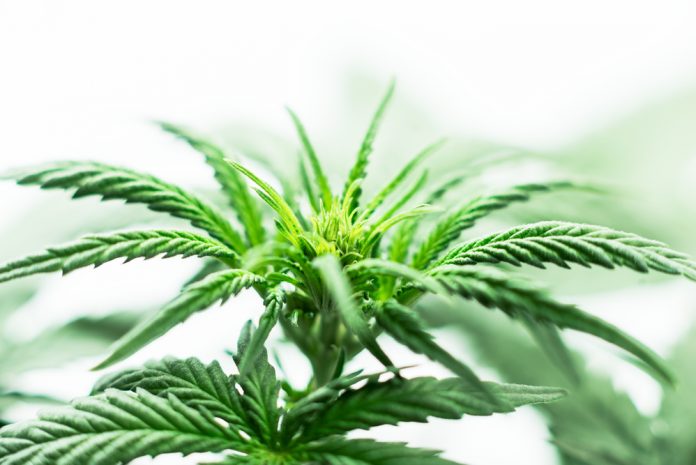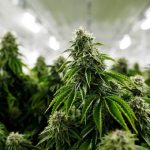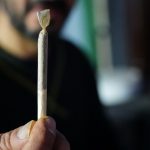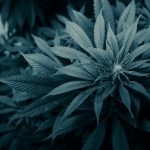U.S, May 8,2020 , (CANNABISTECH) Cannabis Tech spoke with Adam Wolf at Arable about the development of their product suite for outdoor agricultural monitoring.
From monitoring the effects of climate change on California’s redwoods to measuring the microclimates within fields of hemp, Adam Wolf of Arable has made quite the career transition. But it was his work within the canopy of the towering redwoods that led him to develop the suite of products at Arable. Now, with the launch of the Mark 2 in partnership with legendary industrial designer Fred Bould (Nest, GoPro, Roku, Fitbit), the company has set out to take over cannabis crop analytics.
The Mark 2 is a “sensor-packed internet-of-things device” with more than 40 observation streams explicitly developed for monitoring fields of food crops. But, as Wolf, Arable’s Chief Scientist explains, there are direct applications for the cannabis and hemp industries as well.
Outdoor Crop Monitoring
What is clear from a recent interview with Wolf is that the Arable Mark 2 device is not just a weather station. His original inspiration came from an unlikely source, the GoPro. Using the GoPro in the field during his forest monitoring days, Wolf determined it was much more applicable to the task than some of his more scientific devices.
Compared with a cobbled-together device he’d been using for monitoring work, the GoPro was a rugged, highly specialized device capable of capturing true canopy health. How could he take the lessons of the GoPro and transform it into an all-in-one monitoring system? In the end, the development of the Mark “really came out of two things: measuring microclimates and individual plant responses, and making it really purpose-built.”
Roughly the size of a Frisbee, the flagship Mark 2 is an all-in-one crop monitor providing insights into the surrounding climate, as well as a complete analysis of crop health. With everything packing into one device, farmers can now pull detailed insights into the weather and how their crops are reacting to that weather.
The upper surface of the device is engineered to resonate sound during rainfall. Combined with a GPS location device, this means site-specific forecasting and cross-analysis with government-issued mapped weather forecasts. Wolf explains this helps growers determine the effects of microclimates compared with more general weather predictions. Well beyond simple rainfall statistics, the Mark 2 records temperature, humidity, barometric pressure, and radiation.
Radiation is a critical, but often overlooked, element to comprehensive crop monitoring. Wolf describes how radiation is often a predictor of plant stress. Plants use up a significant amount of their energy expenditure on thermal radiation, essentially the canopy temperature. If you can read the canopy temperature, you can then better understand crop stress levels.
The Mark 2 reads deep into plant health. That means it contains a seven-band spectrometer and a chlorophyll index, all correlated with a normalized difference vegetation index (NDVI). Together, these measurements can help cultivators better understand the specific cannabinoid and terpene production based on the light spectrum.
INSIGHTS WELL BEYOND THE FIELD
There are clear and immediate applications for Arable’s crop monitor within hemp fields, and outdoor cannabis grows. But, considering the device is placed just above the canopy, indoor facilities could also pull valuable data-driven insights about their cultivation practices and crop health.
Indoors, like out in the field, needs the same analysis of spectrum, environment, and plant stress to produce replaceable cannabinoid and terpene profiles. And as Wolf details, having the capacity to create consistent deliverables is one of the most critical components of commercial agriculture.
Of course, the farmers on the ground want to use data to understand the environment and plant health, but there are research and development components to crop monitoring as well. Seeing how weather events, microclimates, and specific experimental controls impact growth mean better decisions for future crops.
But the head office and those responsible for supply chain logistics can also pull data from crop-level monitoring to ensure the final product is consistent, delivered on time, and in the quantities promised. According to Wolf, “Our deep product is really oriented around solving the two sides of that equation: the production and the supply chain logistics.”
CONNECTING INFIELD INSIGHTS TO SUPPLY CHAIN LOGISTICS
The Mark has applications for cannabis and beyond, from hazelnuts to vineyards to catnip. Across all crops, Arable’s suite of products, including the Mark 2, is already helping producers get a better handle on the minutiae of their harvests. The Mark 2 device feeds data into Arable’s Insights web and mobile platform, and connects auxiliary sensors like anemometers and soil probes through Arable Bridge to produce even more in-depth and data-driven analytics.
This device may be the first of its kind to put unparalleled scientific data about plant health into the hands of large and small farmers alike. Arable’s new product provides information for those working with the plants in the field, as well as those forecasting supply chain issues upstream. The data connects both ends of the business in a way that mitigates surprises and creates a better, more consistent final product.







